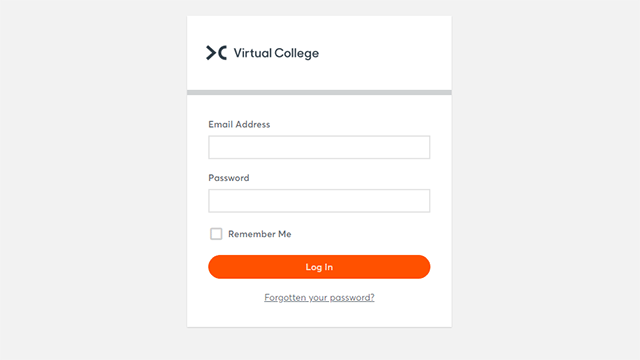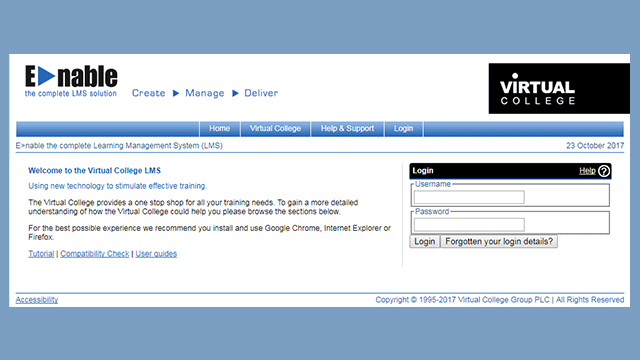How to Promote Digital Learning
E-learning has made a significant difference in learning and development initiatives over the last decade. Staff training is easier to implement for managers and more accessible to a greater number of employees, both onsite and remote, than ever before.
But simply equipping staff with the e-learning tools that they need to complete modules or bring themselves up to date with the latest industry legislation isn't necessarily enough, especially if you want employees to study in their spare time. You need to foster an atmosphere that encourages and rewards digital training, both in and out of your workplace.
In this article, we share some of our top tips on how to promote digital teaching and learning to employees to help boost engagement and motivation, so you can make the most of the benefits that digital workplace learning provides.
What Is Digital Learning?
Digital learning is any kind of learning that is done with the aid of digital equipment and software. It can include hybrid learning, online courses, virtual lectures and seminars and digital resources that help learners expand and consolidate their knowledge.
The digitalisation of learning means that teaching and training can happen anywhere at any time, as long as learners have access to the right kind of technology. Digital teaching and learning are used across a variety of industries and contexts but are particularly popular as a way of facilitating workplace training and personal development.
Why Is Digital Learning Important?
Digital learning is important at work because it allows everyone to undergo necessary training more flexibly. Whether this is mandatory health and safety training or an important course that helps to align employees on a company goal, using digital learning resources makes it easier for everyone to access this information and gives options for how they want to engage with it, which can increase the impact it has.
Digital learning is also important in the workplace when it comes to courses and resources which can help employees build their soft skills and progress in their careers. When you offer these opportunities for learning and development, you can end up with a more talented workforce who are better at their jobs, which in turn improves your overall business performance.
Top Tips to Promote a Digital Learning Strategy
Setting up a digital learning system within your organisation is a great way to deliver effective and efficient training to employees and ensure that your teams remain up to date on qualifications. But you won’t be able to properly reap the benefits of these digital learning resources if your staff aren’t aware of how to access them or motivated to engage with them.
An essential part of effective digital learning in the workplace is promoting the training and development courses that you offer and making them easy for employees to use. With this in mind, here are our top tips to promote e-learning across your organisation.
Frame Learning as a Solution
Promoting your digital learning solutions should be approached in the same way that marketers approach advertising a product. With this in mind, you should frame and promote the learning resources as solutions to common challenges that your employees face, instead of as mandatory or optional content for them to engage with.
For example, mandatory qualifications or courses, such as first aid or safeguarding, should be promoted in your organisation as a way for employees to feel prepared for all scenarios and ensure that they’re adhering to industry standards. Digital literacy courses can be framed as a way to speed up tasks and be more productive. Soft skills training can be advertised as the solution to speeding up career progression.
When you promote the benefits of digital learning and the outcomes of these benefits to your employees, they’ll understand what they stand to gain from it and will be much more motivated to get involved.
Make Access Easy
A surefire way to decrease engagement with digital workplace learning is by making it hard to access. If finding courses, logging into a platform or even just understanding how to navigate digital resources is difficult, learners are likely to give up on completing courses and won’t be engaged with the content.
You also run the risk of your digital learning system gaining a reputation for being difficult to use, which will negatively impact your promotional efforts.
Choosing a platform or training provider with easy-to-use resources is essential, as if it’s straightforward for learners to find and engage with content and courses then there’s less of a barrier to them completing this training. Another good idea is to create simple, easy-to-follow guides that talk learners through how to use the platform, so if they do encounter a problem whilst accessing it, it’s easy to find a solution.
Create a Culture of Learning
Introducing e-learning to your staff training programme for the first time will require a change of mindset among employees, particularly those who are very set in their ways. But by encouraging a culture of continual learning from all kinds of sources, and rewarding those keen to improve their knowledge, these more positive feelings towards e-learning will soon be transmitted to even the most stubborn of workers by their colleagues and managers.
How you integrate digital learning in the workplace into your culture will depend on your organisation and the kind of training you offer. But if you make sure that employees have time in their working schedule to complete training, or that they’re compensated for the time they spend on training outside of working hours, you’ll show that learning and development are a fundamental part of your company and something that all employees can easily access. And when you promote this culture, you’ll get more of your team on board.
Share Positive Feedback
Another really effective way to promote a digital learning strategy is to share the positive feedback that it has already received. Encourage employees to be vocal about the training which they have found effective or consider setting up an ambassadorship program where certain employees act as spokespeople about the training available. These ambassadors can also act as guides for other employees to help them through any issues or answer questions, removing barriers to increased engagement.
Provide Support
Leading on from that point, some members of staff may struggle with having to use e-learning technology for the first time, so it's important to make sure that everyone feels supported and encouraged to use a Learning Management System. Hence, they feel confident to take courses and perform to the best of their ability.
This is also important if workers are expected to undertake digital training in their free time. Make sure they have access to the right equipment, and consider providing working case studies that they can relate to so that they fully understand how e-learning will benefit them in their role.
Be Open to Suggestions
E-learning gives learners more power over their studying, making passive, top-down forms of education somewhat redundant. Instead, learners can be more engaged in the process by offering suggestions for how it can be improved, and this can be enhanced with a proper feedback system.
Feedback from employees is a key part of the learning loop, as we’ve already touched on. Creating a 'learning loop' where learners can make suggestions for improvements to the system and receive feedback for their own work allows for a more active learning system.
Letting staff know that they'll be able to have this input could be another effective way to promote e-learning to them, and it will be a good way to ensure that learners have understood and absorbed their lessons.
Measure and Report on Impact
A great way to get more employees on board with digital learning is to demonstrate the impact that it could have by mentioning what it has done for other learners already. This involves being able to measure the impact that training courses have had on employees’ progress, skills or experience and then sharing this with the wider team.
When you’re implementing digital learning courses, part of the scheme should be to identify what you want learners to achieve by completing them and decide how you’re going to measure this. Whether this is just through an assessment at the end of the course, or a wider assessment of the impact of the training, having access to this data means you can share the potential impact with other employees. It’s also very important to be able to confirm that your training initiatives are working, so you can be confident that you’re spending your resources wisely.
FAQs
What are the advantages of digital learning?
One of the main advantages of digital learning is that it’s accessible to learners wherever they are and can be completed at a time that is most convenient to the individual. Digital learning can also be more engaging, allow for better tracking of progress and performance, and can be personalised to create a more impactful experience.
What is a challenge of digital learning?
One of the main challenges of digital learning is that learners don’t get the same kind of face-to-face interaction with teachers as they do with real-time teaching. This can reduce engagement, stop learners from feeling like they can answer questions, and sometimes lead to misunderstandings or confusion which impact how quickly someone gets to grips with the material.
How can digital learning change education?
Digital learning has the potential to change education in a range of contexts because it offers a more accessible and personalised way of engaging with training and educational content. Instead of learners having to attend sessions in person and only having one way of receiving information, digital resources mean that you can learn from anywhere at any time and can often choose how you want to be taught and consolidate your learning, which increases the number of people likely to get a lot out of it.
Summary
A digital learning strategy is only going to be effective if the people in your company are actively aware of what it offers and are motivated to engage with it. How you promote your digital resources is key to this, so by following the advice we have shared above, you should be able to make the most out of the resources you offer your employees and ensure maximum engagement.
If you’re looking for digital learning resources that can help your employees upskill at work, take a look at our Personal and Professional Development courses or read more about how to get the most out of a digital learning strategy on our blog.























